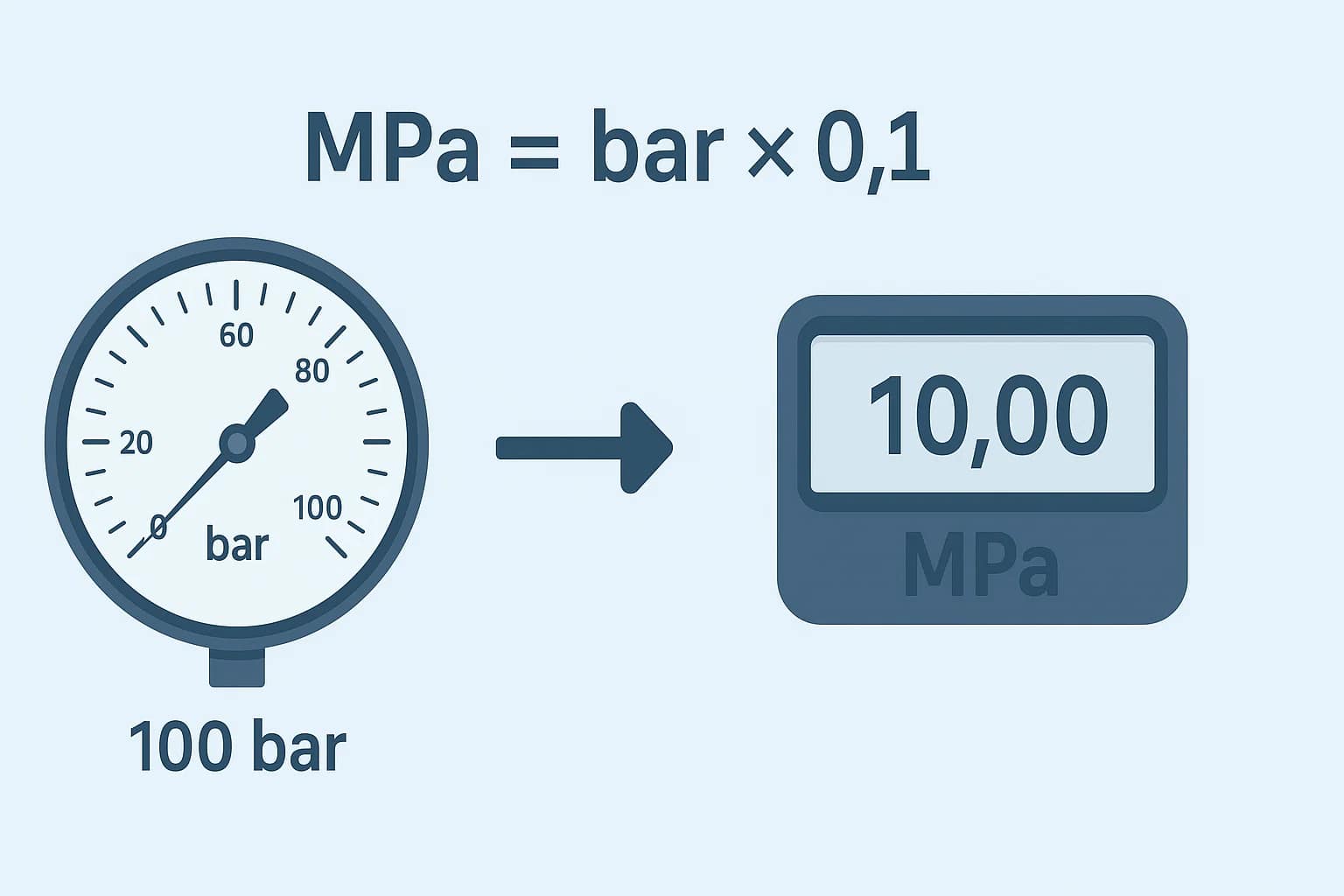bar to megapascal (bar to MPa) - How to convert bar to MPa
The conversion from bar to megapascal is a crucial one in engineering, construction, and scientific work. High-pressure environments such as pipelines, hydraulic presses, and structural testing often require values expressed in MPa. Jetcalculator’s online converter makes this shift simple and precise, ensuring you never lose accuracy where it matters most.
What is a bar?
The bar is a metric unit of pressure equal to 100,000 pascals. While not an official SI unit, it is still widely used in Europe and across many industries due to its practical scale. For example, car tires, diving tanks, and even pressure cookers often list their operating pressures in bar.
What is a megapascal (MPa)?
The megapascal (MPa) belongs to the SI system and equals one million pascals. It is a preferred unit in engineering, particularly for high-pressure applications. For instance, the compressive strength of concrete is typically measured in MPa, and hydraulic systems often operate in the range of several MPa. Its scalability makes it the standard for scientific and technical fields that deal with strong forces and high stresses.
Conversion formula: bar to MPa
The relationship between bar and MPa is direct:
-
1 bar = 0.1 MPa -
MPa = bar × 0.1 -
bar = MPa ÷ 0.1
For example, 50 bar = 50 × 0.1 = 5 MPa.

Did you know?
-
In material science, steel’s tensile strength is often expressed in MPa. High-strength structural steels can withstand more than 600 MPa, which equals 6000 bar.
-
Hydraulic systems in heavy machinery frequently run at pressures above 200 bar, equivalent to about 20 MPa. This is why MPa is a more convenient unit in industrial contexts.
-
In sports technology, carbon fiber materials used in bicycles and racing cars are tested under MPa ratings to measure durability under extreme conditions.
-
The compressive strength of concrete, essential for bridges and skyscrapers, is normally given in MPa. Ordinary concrete has about 20–40 MPa, while ultra-high-performance concrete can exceed 150 MPa.
Pressure and progress: the story of hydraulic presses
A fascinating real-world example of bar-to-MPa relevance comes from the invention of the hydraulic press by Joseph Bramah in the 18th century. The press operates on Pascal’s principle, where pressure applied to a confined fluid is transmitted equally in all directions. Modern hydraulic presses, used in car manufacturing and metal forming, generate pressures often exceeding 100 MPa. Originally, such machines were calibrated in bar, but today’s global engineering standards rely on MPa for precision. This shift demonstrates how a simple unit conversion helped unify technical communication across industries and borders, making large-scale manufacturing safer and more efficient.

From numbers to real-world strength
The formula 1 bar = 0.1 MPa is simple, but its real-world impact is enormous. From testing the strength of materials to running hydraulic systems and building megastructures, this conversion underpins modern industry. With Jetcalculator, you can move between bar and MPa seamlessly, ensuring your results are not just correct but meaningful in practice.
If you often deal with high-pressure calculations, the dedicated Pressure Converter is your go-to resource for accuracy and speed. Jetcalculator also offers a complete Conversion Tools, covering not only pressure but also length, volume, energy, and even geometry-related calculations. Whether you’re solving engineering problems or checking everyday values, these tools bring clarity to every number.

